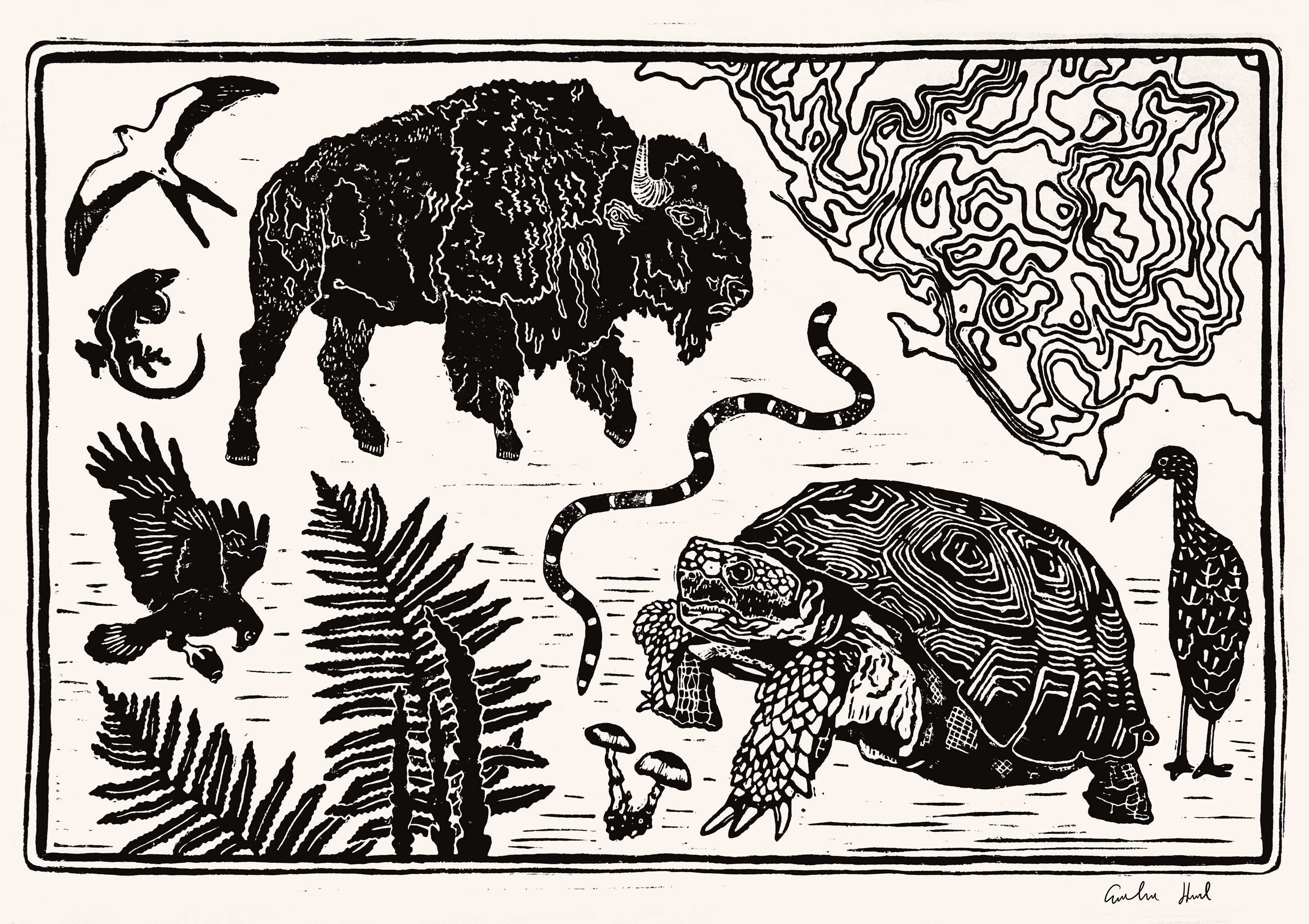Dirac’s sea and a Mango-shaped space
Now imagine having done this for every new thing you’d encountered for the first several years of your life. Then, one day while talking with family or friends, you realize the way that you perceive the world is qualitatively different from the way others perceive it.

Some might feel non-plussed after realizing the world they’re familiar with is different from the one conceived by others. Some, like the character in the book, might feel rattled at their window into reality being suddenly called into question.
When Caroline Hurd read “A Mango-Shaped Space” as a kid, this revelation was affirming. She remembers thinking, “Oh! This is a thing. I figured this was just me being weird.”
Caroline has a mild form of synesthesia. For her, some objects are associated with a faint impression of color. She’s also good at distinguishing colors at opposite ends of the visible spectrum — blue, red; black, white — but medium values often bleed together.
The book’s titular character is a cat named Mango, and the title is a reference to the hole Mango left in the minds of those who loved him when he died. The mango that once elicited all sorts of joyful feelings when he was alive sparked emotions of a very different sort in his absence. Joy was replaced with sorrow, contentment with distress. His departure created a sort of anti-mango.
This is same logic Paul Dirac used in the conceptualization of an immense electric sea, in which positrons are created by the absence of electrons. I’d be remiss if I didn’t mention there are entire religions and spiritual practices built on this axiom. In Taoist philosophy, “All can see beauty as beauty only because there is ugliness. All can know good as good only because there is evil.”
Dirac’s interpretation has since been replaced with other, mathematically equivalent ways of picturing anti-matter. If string theory turns out to be the correct model of reality, matter and anti-matter would be considered different vibrational modes of the same string. In the current framework of quantum field theory, anti-particles are considered to be exactly the same as ordinary particles but with a complementary charge. They both have the same size and mass, but like a mirror image, their charges are flipped.
This reversal is referred to as charge, time and parity symmetry, which is baked deeply into the structure of our universe. But there are, apparently, exceptions to this rule. Physicists have lots of theories on how CPT symmetry might be violated, but the ones we are confronted with the most obviously are the asymmetries of time and anti-matter.
Time only seems to move in one direction, meaning it does not have a mirror image that we’re aware of. That means it breaks CPT symmetry. There is also an imbalance of matter and anti-matter in our universe; otherwise, we wouldn’t be here. How, then, does one explain all of existence?
My favorite analogy for conceptualizing this involves cake batter. In the early moments immediately following the big bang, the universe could be thought of as a mix of raw ingredients that were combined to make a cake. Most of that mix was scraped out, baked and eaten, a metaphor for the way matter and anti-matter annihilate when they meet. The leftover batter that got stuck to the side of the bowl is what hardened into our universe.
Or, according to a more recent theory, maybe there’s an anti-universe in which time runs backward and there’s more anti-matter than matter. The topic is currently up for debate.
In this universe, the symmetry opposites helped Caroline pick up linocut much faster than other mediums she’d worked with. In linocut, “I like to say that you have to do linocut backwards, which works with my backwards brain. It just clicked,” she said.
Caroline created the business Cassava and Rye. When I sat down to talk to her in May, she’d just transitioned to being a full-time artist after several years of creating and selling her work as a side hustle. Like Leslie, she draws her inspiration from the wilderness. Much of her work depicts local wildlife, from birds to plants to algae to fungi and everything in between. Also like Leslie, Caroline wants to give people a glimpse of the world filtered through the lens of her perception.

“Art is such a translation of the world. This is what I see. Is this what you see? And how can we connect over that,” she said.
Caroline is a recent Gainesville transplant. She grew up in Michigan and worked in several different places before coming here. She did a stint working on sea turtle conservation in the Virgin Islands and spent a memorable year in the Sierra Nevada, where she taught science to kids in the central valley who rarely got the chance to visit wild spaces.
She majored in ecology and evolutionary biology in college and never lost the habit of thinking scientifically. One of her pieces I love most is a watercolor print depicting the microscopic organisms that live in ponds. Many artists tend to skip over these smaller, traditionally less appealing, aspects of nature, but Caroline embraces them.
“I feel like science is just beauty magnified. It’s a way of zooming in on things that astound you. A tree is beautiful, but have you ever looked at a cell? Have you ever watched a protein walk?”
For Caroline, zooming in or out opens new vistas, each equally as beautiful as the ones at lower and higher scales. Her art briefly pulls you from the malaise of everyday experience and reminds you of how strange and wonderful everything is.
If there’s a point to be taken away from this lengthy foray, it’s that the universe is weird and no one completely understands it. But the same patterns seem to trickle up and downstream, like a Mandelbrot set.
One of the most deeply ingrained patterns is the binary yes/no, you/me, liberal/conservative, love/hate, guilty/innocent, hope/despair, life and death divide. To negate one is to eradicate the other. On the one end of this permeable boundary is a dense substance, on the other, a substance that less or more so. The movement of both substances as they equilibrate creates the osmotic flow of life.
The other point to take from this is that Leslie and Caroline’s art is awesome, and you should check it out!


